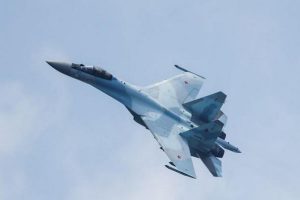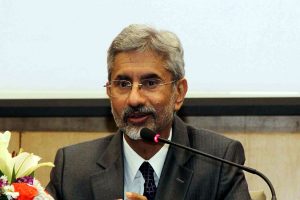As emerging and developing economies (EMDEs) navigate a turbulent world of intense geopolitical rivalry and worsening climate warming, the question of a new development model is at the top of the growth agenda. The current narrative is one of how EMDEs choose sides between an insecure rich West and the rising BRICS (Brazil, Russia, India, China, South Africa) grouping of countries that seek an alternative order to the current G7 dominated neoliberal system.
The Biden Administration story of a choice between democracy versus autocracy and supporting a rules-based order is today not convincing to the Global South, which sees a global retreat in democratically-led countries, whilst the West can selectively “do as I say, not as I do”. Free market order is in serious retreat as tariffs and sanctions are raised unilaterally, with industrial policy and state intervention rising by the day. The issue is less capitalism versus socialism, because some capitalist countries are turning fascist, whereas climate change policies cut across ideologies. All countries face two serious imbalances – social injustices in terms of widening income and wealth, as well as planetary injustice as natural capital is being plundered with pollution, biodiversity loss and ruthless extraction of minerals and nonreplaceable natural resources.
Advertisement
Attending the Global Islamic Economy and Finance Forum in Kuala Lumpur this week, it struck me that the theme illustrated a dilemma of policy choice – promoting the real economy over finance or the other way round? Finance has led the real economy in global growth since the 1980s, when financial liberalization became synonymous with the neoliberal order. Allowing open capital accounts, promoting free financial markets and competition seemed to lead to efficient capital flows that helped economic development. The Washington Consensus was discredited by the 1997 Asian financial crisis and the 2008 global financial crises, which revealed that free market order promoted concentration, financial frailty, market instability and social inequality.
The 2020-22 pandemic and economic lockdown was “medicated” at the economic level with greater monetary creation and loose fiscal policy, but since 2008, global growth has slowed because financialization increased debt at the expense of real sector productivity, inviting shortterm speculation rather than making long-term investments and structural, but painful reforms. A policy of “low hanging fruits” that took easy (politically less painful) solutions ended up with “small yards and high fences”, effectively protectionism and containment instead of multilateral cooperation to resolve global issues.
The dilemma of finance versus real sector is easily seen by the example of a national balance sheet, in which the national assets (real)side is funded by the liability (monetary or financial structure) side. Finance does matter, because if the real sector is funded fully by debt, especially foreign debt, and the country has no foreign exchange to repay when required, the country will go into crisis – exactly what happened to the Latin American economies in the 1980s, as well as the East Asian economies in 1997/98. The European debt crisis of 2008/2009 revealed that even though Europe was rich and prosperous, when the deficit countries of Ireland, Greece and Italy could not pay their debt (even in Euros), they had to “mutualize” debt across Europe as a whole.
From a national financial condition perspective, a country is viable if the return on total assets exceeds the cost of funding on the liability side. The country will go into debt and deficit if the return on assets is lower than the debt funding costs, especially if consumption has been largely funded by debt. The free market model has allowed debt to balloon since the 1980s. In 1980, the total financial asset to GDP was nearly 100 per cent of GDP, which has risen to over 400 per cent, with massive growth in debt, whereas equity has remained around 100 per cent of GDP.
In other words, the gross leverage (debt versus equity) has risen to roughly three times. This is where the US stock market model has become superior to the Chinese, European and Japanese models, which are heavily bank-led. The US corporate sector is not bankfunded, preferring to take high bets on technology through funding by the private equity-venture capital model using IPO (initial-public offering) to attract public capital. Both China and the United States have considerable strength in Artificial Intelligence, but the US stock market capitalization, aided by the Magnificent Seven tech companies, increased by US$10 trillion in 2023, whereas the Chinese tech platforms market value was flat last year. Guess who has a better tech and market narrative, with the ability to attract global talent? In other words, a country with a stronger real economy story, funded by the right type of risk capital, will outperform competitors with a weak real economy development model, funded by fragile debt.
The Islamic economy and finance story is illustrative of this dilemma. There are roughly 1.6 billion followers of Islam, roughly one fifth of mankind, but the Islamic countries’ GDP is approximately 9 per cent of world GDP, whilst Islamic finance assets were $6.7 trillion, about 1.5 per cent of global financial assets of more than $461 trillion. Clearly, there is a considerable way to go to develop Islamic economies on the real side and financial side. Islamic finance is equity-based or a risk-sharing model, with ethical or Syariah considerations. The Muslim faith abhors usury and encourages the rich to perform zakat or charity. In that sense, the logic of Islamic finance promotes a circular economy of selfrestraint discipline through faith and is more just through risk-sharing. Debt finance operates on risk-transfer – the lender protects its interests through collateral or third-party guarantees, whilst the borrower bears all the risks of failure.
In short, in a world of more volatile and unpredictable geopolitical and climate warming risks, funding development through equity and ethical values is a demonstration of practicing sustainable ESG (environmental, social and governance) goals. Under the free market model with one dominant hegemon, free market policies make sense because the hegemon maintains overall stability and benefits from everyone following its rules. In a world of contending powers and higher risks, with greater uncertainty, practicing real sector strategy and prudent, low-geared equity-based funding that tackles both social and environmental injustices seems the right way to go. Playing with finance is shuffling decks on the Titanic. Turning the Titanic away from existential disaster is the real sector realistic approach, where we should put all our collective efforts.
(The writer, a former Central banker, is Distinguished Fellow of Asia Global Institute, University of Hong Kong.) Special to ANN.











